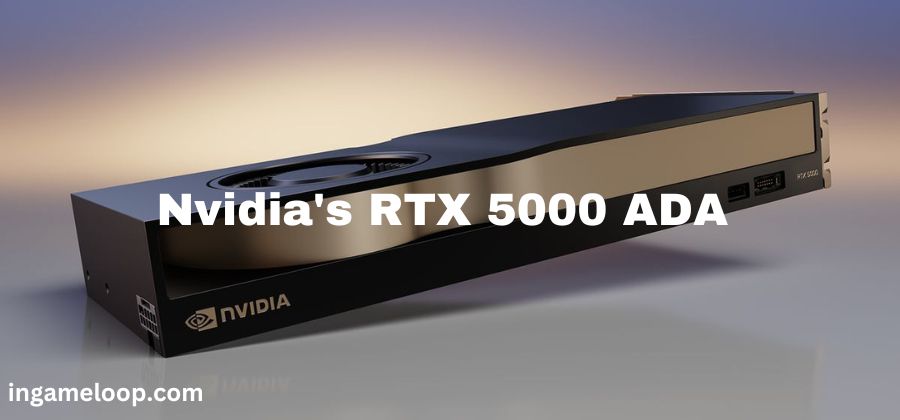
Nvidia, a leading name in graphics technology, has quietly introduced its latest offering, the RTX 5000 Ada Generation graphics card. Designed primarily for professional visualization (ProViz) applications, this cutting-edge board is equipped with the company’s flagship AD102 GPU tailored for client PCs. However, it has undergone a substantial reduction in configuration to limit power consumption to a commendable 250W.
Under the hood, Nvidia’s RTX 5000 Ada Generation graphics card is based on the AD102 graphics processor. It boasts an impressive 12,800 CUDA cores spread across 100 SMs, offering peak compute performance of 65.3 FP32 TFLOPS.
The card is mated to 32GB of GDDR6 memory using a 256-bit interface. In comparison, Nvidia’s top-tier RTX 6000 Ada, powered by the same AD102 GPU, ups the ante with 18,176 CUDA cores, delivering an astounding 91.6 FP32 TFLOPS. Additionally, the RTX 6000 features a generous 48GB of GDDR6 memory connected to the processor via a 384-bit bus.
While a 30% reduction in the GPU configuration may seem unconventional, it may have been the strategic choice to create a product that slots in beneath the RTX 6000 Ada while still maintaining a discernible, if not dramatic, performance gap with the top-of-the-line ProViz graphics card.
For context, Nvidia’s full AD103 maxes out at 10,240 CUDA cores spread over 80 SMs, suggesting that its potential performance would be notably lower than that of a scaled-down AD102.
Despite the substantial reduction in GPU configuration, Nvidia has retained a notable power rating of 250W for this offering. The board features a dual-slot cooler with a single blower for efficient cooling. Additionally, it utilizes a 12VHPWR PCIe auxiliary power connector.
The industry now awaits Nvidia’s strategy for leveraging the AD103 chip in its professional offerings. The RTX 6000 Ada makes nearly full use of the AD102, with 142 out of 144 SMs and the complete 384-bit memory interface. In contrast, the RTX 5000 Ada employs the AD102 with 100 SMs and only a 256-bit interface. The specifications take a substantial dip with the RTX 4500 Ada, which implements a complete AD104 with 60 SMs and a 192-bit interface.
Retailers, notably including PNY, have brought the Nvidia RTX 5000 Ada boards to market, though with a surprising markup in prices. Nevertheless, the card is not currently available at its manufacturer’s suggested retail price (MSRP) of $4,000, with prices currently hovering at 10-20% above this mark. In an eyebrow-raising move, ProVantage has even suggested a list price of $6,999, claiming a 37% discount, a figure which should be taken with caution.







